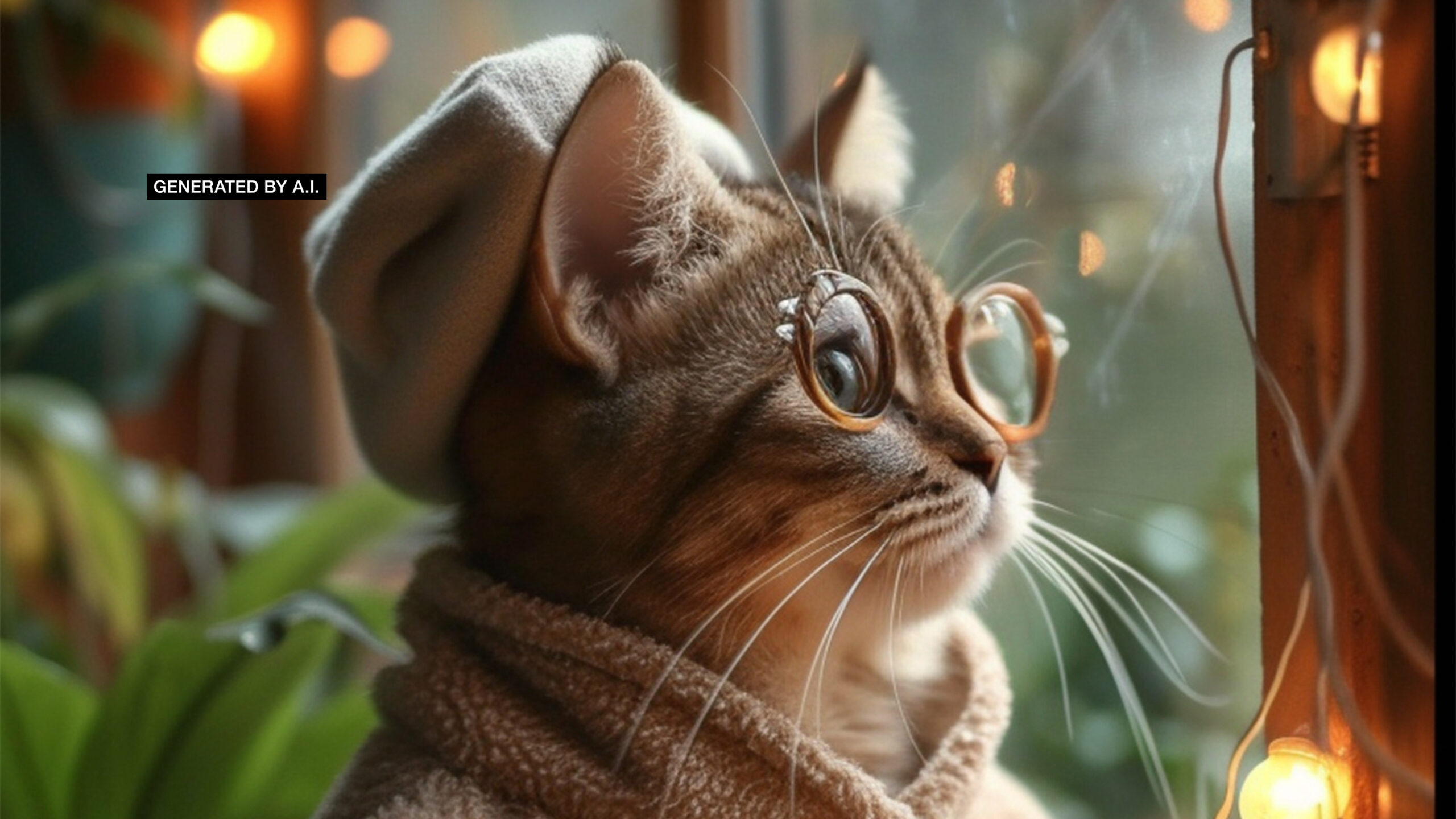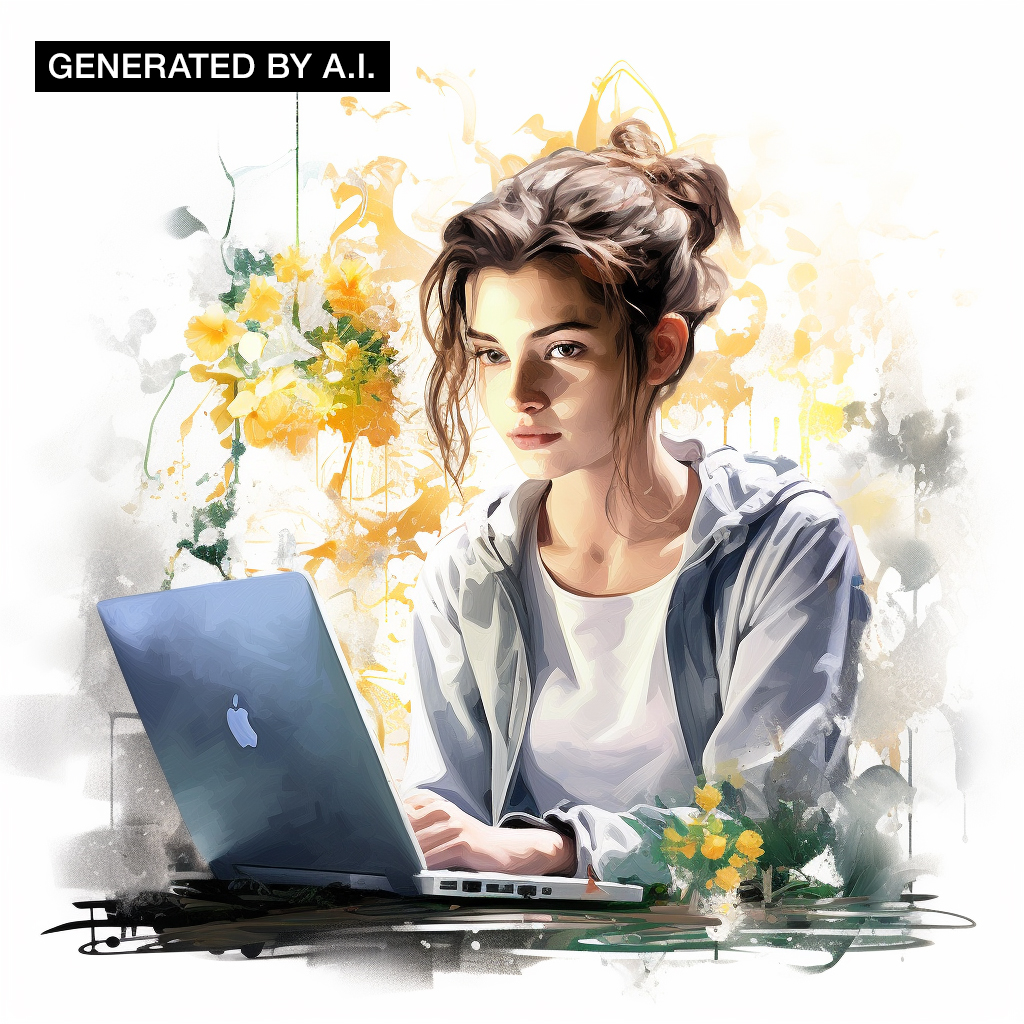During this summer, a team of students from MIT embarked on a journey to the sou …
AI Art Generation Used in Educational Settings
Jennifer Livingstone

Throughout history, art has been a medium to depict the human experience. From the ancient Franco-Cantabrian cave paintings in France and Spain to the exquisitely crafted Buddhist statues in the Mogao Caves in China, the diverse art forms created by humans tell the story of humanity across the globe.
As technology advances, artists have embraced new tools to express their creativity. The emergence of digital art and the ability to share it globally has sparked a revolution in the art world. This shift to digitization has paved the way for the development of extensive data sets, which in turn have been harnessed to train powerful algorithms known as diffusion models. Artificial intelligence (AI) art generation tools have now become the latest innovation in the realm of artistic creation.
Renowned artist Michelangelo, often hailed as a pioneer in the art world, once remarked, “A man paints with his brains and not with his hands.” With the advent of generative art as a creative tool, Michelangelo’s words ring true in the modern era.
The evolution of digital art now allows creators to input text or upload images, enabling generative AI art tools to produce stunning and imaginative artwork.
From platforms like Midjourney, Dall-E integrated into ChatGPT, and Microsoft Copilot, to the generative features of Canva, Adobe Firefly, and Adobe Photoshop, cutting-edge tools for art creation are now readily accessible to students and educators, many of which are free to use.
Artificial Intelligence in Art
The realm of generative AI art has transformed words into a new artistic medium. Similar to the artist’s traditional tools such as brushes, palettes, and canvases, the emergence of methods for creating visually captivating artworks through AI technology can be learned and mastered.
Individuals fluent in the language of art are now empowered to manifest artistic creations with the aid of AI.
Analogous to interacting with voice-enabled smart devices at home, the importance of imparting students with a descriptive art vocabulary is profound. The ability to convey nuanced prompts for art generation is enhanced through a comprehensive understanding of artistic terminology.
While using AI tools for art creation, it is essential to exercise human oversight. AI may not accurately depict specific visual elements like an eagle in flight based solely on patterns from its training data. Therefore, generative AI tools often provide multiple output options for users to refine and choose from.

In the realm of AI art, caution should be exercised when using subjective terms like beautiful, pretty, or ugly, as these descriptors vary from person to person. Utilizing precise language in art creation is akin to ordering a specific type of coffee at a café, contingent upon individual preferences.
Creators leveraging AI art tools must remain vigilant about potential biases present in the datasets utilized by various AI art diffusion models.
For instance, studies have shown that data sets skewed towards one racial group can result in biased artistic outcomes, highlighting the importance of addressing representation disparities. Users of AI technologies should be proactive in identifying and rectifying biases in the creation process. Educating students on recognizing bias in AI systems is paramount, ensuring they can actively contribute to a fairer artistic landscape.
Essential Artistic Knowledge
Amid the proliferation of AI art tools, possessing a profound understanding of art is crucial. Key areas of knowledge include:
- Historical art locations and periods
- Renowned artists and their works
- Significant artifacts from historical periods
- Various art styles
- Diverse art mediums such as sculpture, painting, and photography
- Moreover, knowledge of shapes, colors, textures, and patterns enriches the process of generating AI artwork effectively.
When engaging with AI art creation, individuals typically select a diffusion model, an AI methodology that generates extensive art pieces from text prompts. Notable diffusion models include Dream Studio, Dall-E, Midjourney Stable Diffusion, and CF Spark, each offering distinct features and capabilities.
To aid users in mastering prompt generation in these systems, prompt-building tools have emerged, facilitating the creation of desired images. As AI technologies advance, the process of generating customized artworks will become increasingly streamlined.
One effective approach to learning the nuances of AI art generation involves exploring sample prompts tailored to the specific diffusion model being utilized. Keeping a repository of prompts for reference, both personally and for educational purposes, enhances the art creation process.
Exercise Caution
Vigilance is imperative when overseeing AI-generated artworks, given the unpredictable nature of students’ creative endeavors alongside the capabilities of art-creation tools.
While personal experience with platforms like Midjourney can provide valuable insights, caution is advised regarding the usage of these tools in K-12 educational environments due to potential privacy concerns associated with public Discord servers.
Preserving the Integrity of Art
While some artists may perceive AI art generation as a challenge, the emphasis on authentic, handcrafted art may see a resurgence in appreciation. Increased awareness and education about art may elevate the value of traditional artistic practices. Additionally, concerns regarding copyright infringement and respect for artists’ intellectual property rights underscore the ethical considerations in AI art creation processes.
Ultimately, the integration of AI art generation emphasizes the critical role of art knowledge as a foundational skill for contemporary creators and digital artisans worldwide. In the age of AI-driven creativity, expertise in art serves as a cornerstone for students, enabling them to continue the legacy of capturing the essence of the human experience through innovative means.

